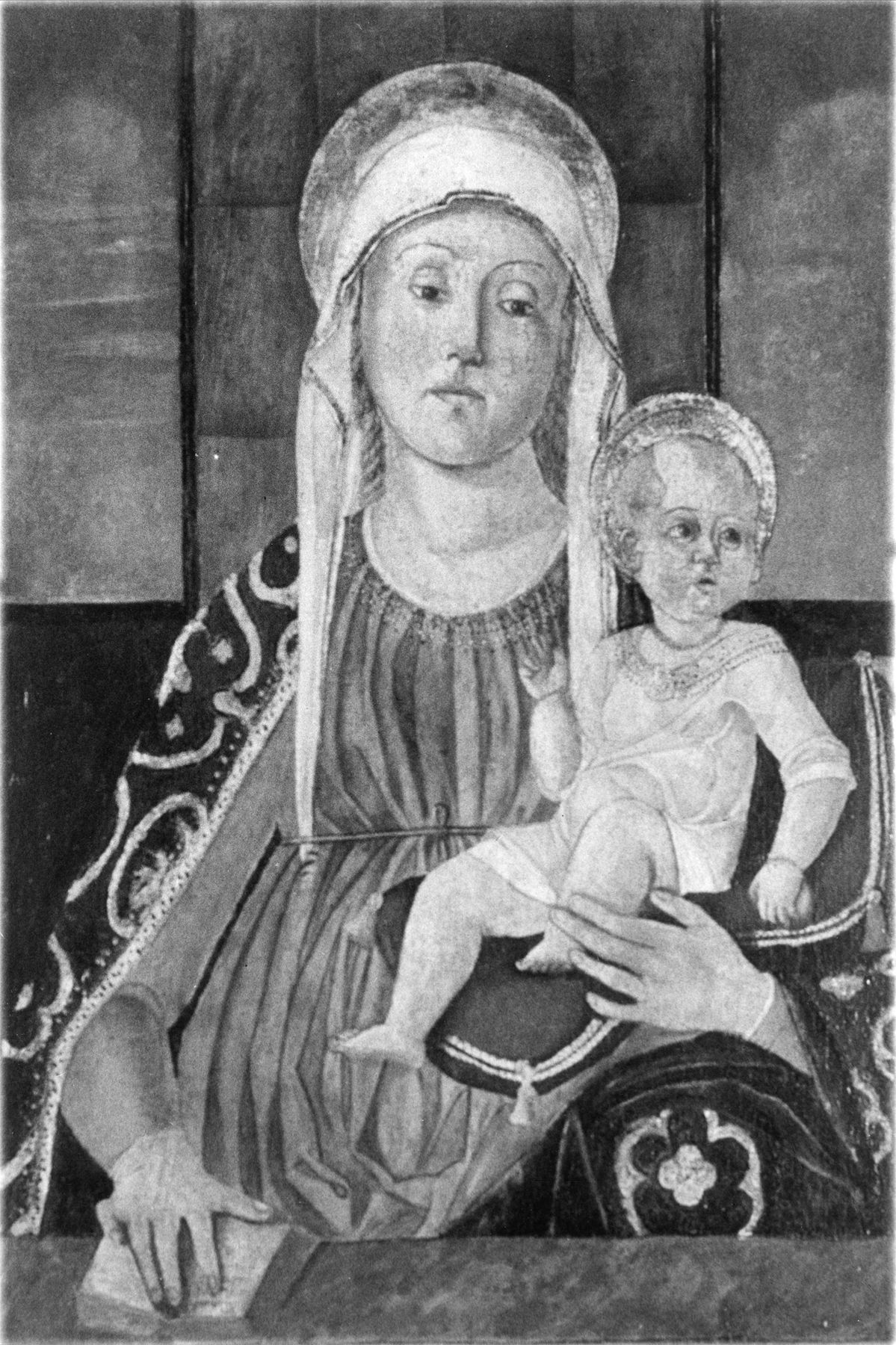Madonna and Child
(Renaissance Europe )
The Madonna and Child are seated in a room before a cloth of honor that signifies their regal status (as King and Queen of Heaven). Two arched windows originally flanked the figures; though later painted out, they are still visible beneath the sky. The Madonna rests her hand on an open book and gazes into the distance while the Christ Child, propped on a cushion on her knee, raises his right hand in a gesture of blessing and looks to his left. The Virgin’s robe is elaborately patterned and the child wears a necklace of coral, commonly believed to ward off evil. The painting's small size indicates it was likely displayed in a domestic interior.
Little is known about Antonio da Tisoi. His existence is in fact known only from his signature on this painting—on the “cartellino" (fictive piece of paper) attached to the parapet—and one other, a large altarpiece dated 1512, now in the Liechtenstein Collection in Vaduz. As indicated by his name, Antonio was a native of Tisoi, a tiny village in the outskirts of Belluno, north of Venice. His two signed paintings and a very few others attributed to him on the basis of style suggest he either trained in Padua in the circle of Jacopo da Montagnana (ca. 1440-99) or in Venice in the circle of Alvise Vivarini (1442/53-1503/05), more likely the first. The Walters Madonna, the surface of which is significantly abraded, is less polished than that of the Liechtenstein altarpiece. Scholars have generally placed it among Antonio’s earlier works, in the late 1400s. The harsh angles, flat gold halos, and heavily contoured forms are rarely encountered in painting in the Veneto after 1500.
Inscription
Provenance
Provenance (from the French provenir, 'to come from/forth') is the chronology of the ownership, custody, or location of a historical object. Learn more about provenance at the Walters.
Casa Pagani, Belluno, prior to 1871 [mode of acquisition unknown]; Private collection, Paris [date and mode of acquisition unknown]; Henry Walters, Baltimore, ca. 1915 [mode of acquisition unknown]; Walters Art Museum, 1931, by bequest.
Geographies
Italy, Venice (Place of Origin)
Measurements
Painted surface H: 28 7/8 x W: 19 in. (73.3 x 48.3 cm); Panel H including original engaged frame: 31 13/16 x W: 21 9/16 x D: 1 9/16 in. (80.8 x 54.7 x 4 cm)
Credit Line
Acquired by Henry Walters, ca. 1915
Location in Museum
Not on view
Accession Number
In libraries, galleries, museums, and archives, an accession number is a unique identifier assigned to each object in the collection.
In libraries, galleries, museums, and archives, an accession number is a unique identifier assigned to each object in the collection.
37.1894




